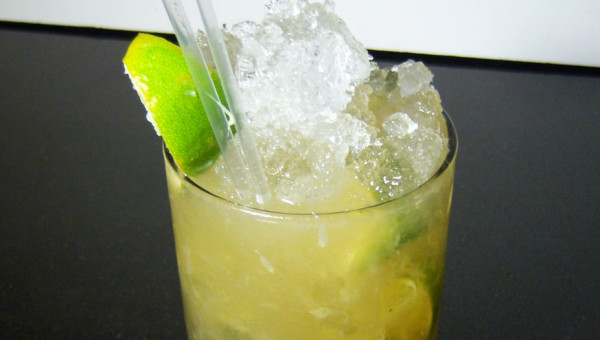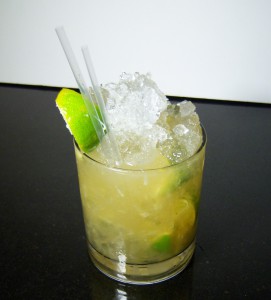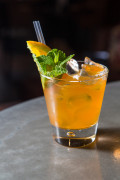Caipirinha – The Pride of Brazil

The Caipirinha cocktail is the national cocktail of Brazil and is one of several simple cocktail with cachaça, with this one adding sugar & lime. Cachaça is a spirit made from the distillation and fermentation of the sugar cane juice and is essentially a type of rum, produced exclusively in Brazil. The main difference between cachaça and rum is that rum is usually made from sugar cane molasses, while cachaça is made from fresh sugarcane juice. The word Caipirinha is the diminutive version of the word caipira which refers to someone from the countryside, being an almost exact equivalent of the American English hillbilly. Since 2008 the Caipirinha is one of the International Bartenders Association designated list of Official Cocktails.
Throughout Brazil, there are over 5000 brands of cachaça, the key ingredient in a Caipirinha cocktail. The spirit basically falls into 2 groups: artisanal and industrial. Artisanal cachaças are produced by small, sometimes family-based, distillers throughout the country and because of the care given to their product they are generally considered to be among the best cachaças available. The beverage is still distilled in a copper pot and only the best part of the distilled liquor is then retained for aging. Cachaça is the aged in special wood barrels made from trees such as almond, cherry and oak and the manufacturers tend to sell in small quantities and usually directly to the market. Industrial are cachaças made in much bigger batches by larger manufacturers and their distillation process trades off some impurities for volume production. These cachaças are not aged and have a more fiery taste.
Similar to tequila and rum, you are able to buy white and gold versions of cachaça on the market. The white variety will be unaged and will tend to be cheaper than the gold variety, which is usually marketed as premium cachaça and tends to be smoother and more refined.
Regarding the history of the Caipirinha cocktail, the most popular theory is that it evolved as workers on Brazil’s sugar cane plantations looked for a palatable way to drink the cachaça they were helping to produce. Like rum, cachaça is made from sugar cane, but it has a stronger flavour because its distillation process retains more impurities, and hence limes and sugar were added. Unlike rum, cachaça does not taste particularly good on its own and hence cocktails with cachaça have been the main driving force of the spirit – although aged cachaça sipped over ice is an exception. An alternative theory has it that Portuguese slave traders returning to Europe would use limes to prevent scurvy, which they added to the cachaça they’d picked up in Brazil and combined with sugar for sweetness.
The Caipirinha cocktail is one of several cocktails with cachaça widely enjoyed in bars, restaurants and nightclubs across Brazil and is also commonly made at home. Up until about 10 years the Caipirinha was not well known outside Brazil, but due mainly to the rising availability of high quality brands of cachaça outside Brazil, such as Leblon and Sagatiba, this has started to change. The term Caipirinha is also sometimes loosely used to refer to any cachaça and fruit drink, such as the Raspberry Caipirinha. There also exist several popular variations of the Caipirinha, such as the Caipisake, where sake replaces the cachaça, CaipirItaly, where Campari replaces cachaça and Caipiblack where black vodka replaces the cachaça.
Cocktail Ingredients
50 ml Cachaca, 1/2 Lime, 1 teaspoon Brown Sugar, Lime Wedge
How to make a Caipirinha
Cut 1/2 lime into 1/8 ths and add half of these to Rocks glass. Add teaspoon of brown sugar and muddle the ingredients. Add the rest of the lime and continue to muddle, to dissolve the sugar. Add the Cachaça and then add crushed ice on top. Stir to continue to dissolve the sugar. Add more crushed ice and continue to stir. Top up with crushed ice and garnish with lime wedge.



